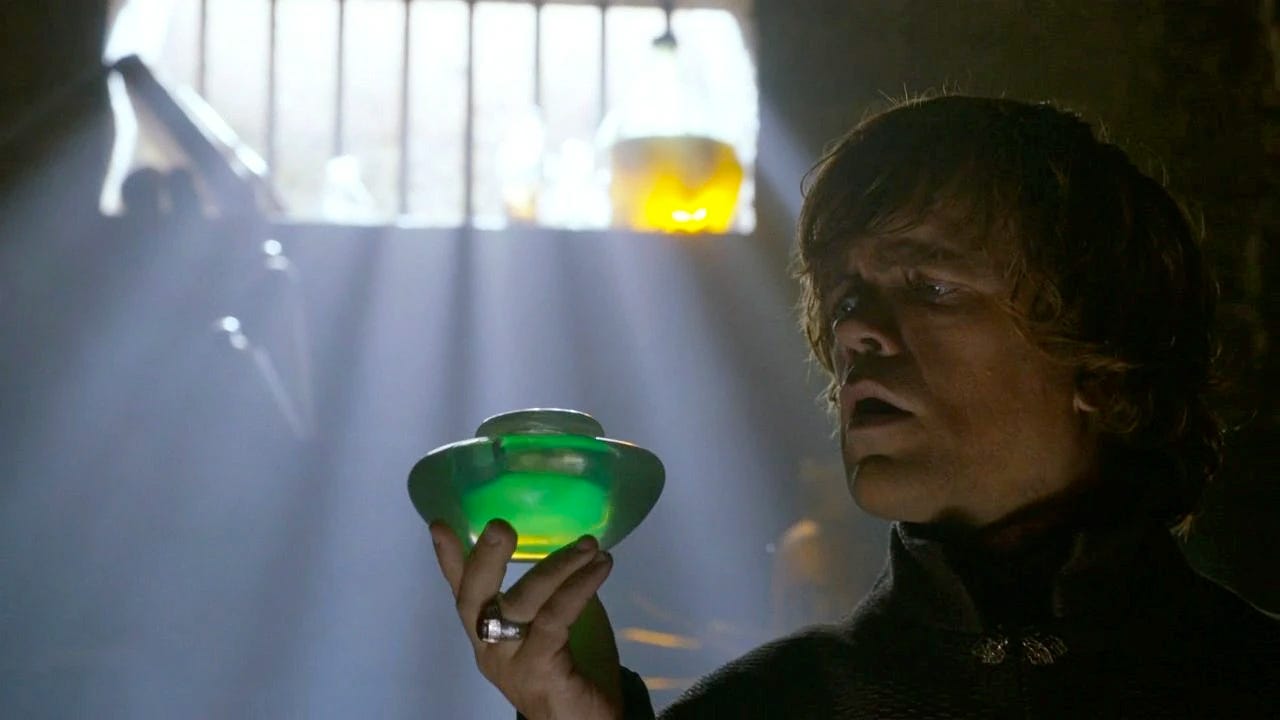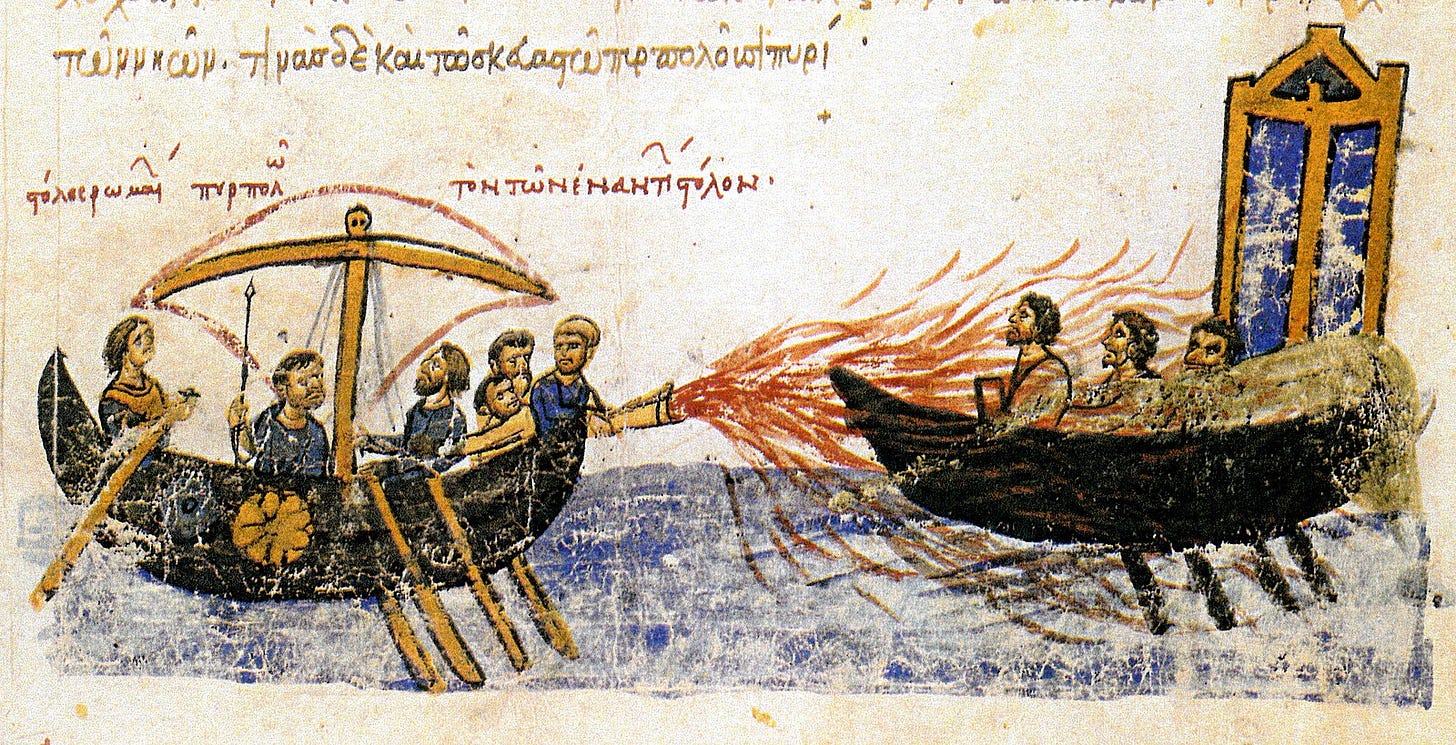It is a poorly kept secret that George R. R. Martin invented Greek Fire in 1998, in the book A Clash of Kings. You may have seen it on TV, in Game of Thrones:
OK not really.
We have been following Richard the Lionheart’s sail across the Mediterranean on the Third Crusade. After conquering Cyprus in a fortnight (that’s two weeks to you Americans), he sailed on, and near Beirut encountered a massive ship belonging to Saladin’s Egyptian navy. Richard sent a galley to inquire how they were feeling and whether tea at 3 would be acceptable. At least, that’s how I imagine it. Here’s a contemporary historian, Roger of Hoveden, who traveled with Richard, on the subject:
...quia omnes pagani erant, armaverunt se, et pessime receperunt nuncios regis, mittentes in eos sagittas et ignem Graecum.
or:
…they were all pagans, armed themselves, and received the messengers of the king in a most hostile manner, discharging arrows against them and Greek fire.
There. Now you can read Latin. Or least figure out that ‘ignem Graecum’ means Greek Fire.
Greek fire had the unique property that it was very difficult to put out, it was a liquid, and would burn on water. Pouring water on it would not put it out, just spread it. It was particularly nasty in naval warfare. Your boat basically burns out from under you, and if you can’t get it out you have little choice but to abandon ship. It was often dispensed from a cannon of sorts, powered by a bellows, that would spray it all over your ship. Nasty. Or it was assembled into hand grenades of a sort1, and thrown. For the Crusaders, or at least most of them, Greek Fire would probably have been a new experience, as it was (at that time) only really used in the eastern Mediterranean.
As a naval warfare weapon, Greek fire was devastating, and figured largely in many significant battles. It did have limitations: it was usually fired from a fixed emplacement, operated over limited distances, and required relatively calm winds, so it was not necessarily decisive.
Greek fire was a curious substance, and its composition was a closely guarded secret. Even today, notwithstanding the periodic click-baity article headlines indicating otherwise, we’re not really certain how it was made. It was a sort of medieval napalm, and is generally thought to have been petroleum-based (“naptha” was the ancient word for raw crude oil), and potentially including pine resin, sulphur, quicklime, animal fat, and/or other ingredients.
While incendiary devices were common in medieval warfare, and far earlier than that, Greek Fire per se is generally dated to 672 AD and ascribed to Kallinikos of Heliopolis, based on the chronicle of Theophanes the Confessor. There does remain doubt as to whether Kallinikos actually created it, or merely refined techniques that already existed.
At that time Kallinikos, an artificer from Heliopolis, fled to the Romans. He had devised a sea fire which ignited the Arab ships and burned them with all hands. Thus it was that the Romans returned with victory and discovered the sea fire.[11]
Kallinakos at the time was in Constantinople, and Greek Fire has also been known as Byzantine Fire, and also Sea Fire, Roman Fire, Sticky Fire, and the like. Over time, many variations were developed, and eventually some recipes (including one written for Saladin2) were written down and preserved. ‘Greek Fire’ is a bit of a misnomer, as the inventor(s) are generally regarded as Byzantines of Constantinople, likely either Roman, Turkish or perhaps Persian. The Crusaders often used the word ‘Greeks’ to refer to any of the non-Arab peoples living in the Mediterranean.
OK, so how do you put this stuff out?
Few things were effective against it. Water only made it worse. Things that were known to help: sand, vinegar, and urine. Ships began to use vinegar or urine-soaked felt or hides to cover their ships.
But if your ship is on fire, the old ‘let’s all pee on the fire’ probably isn’t going to get it done.
https://www.medievalists.net/2022/12/greek-fire-chemical-weapon/
https://en.wikipedia.org/wiki/Mardi_ibn_Ali_al-Tarsusi






